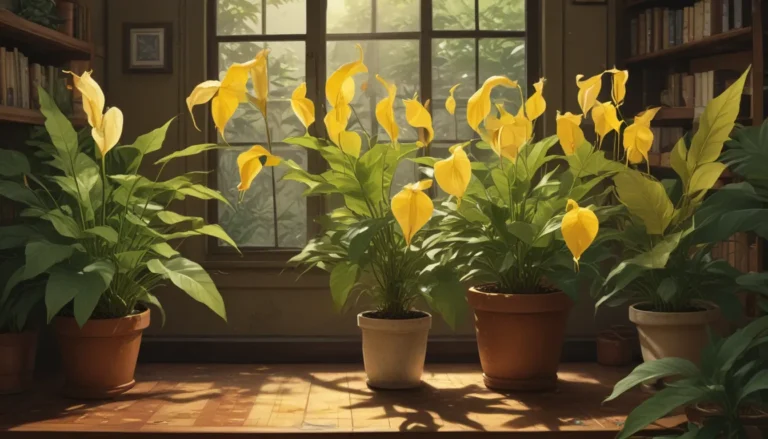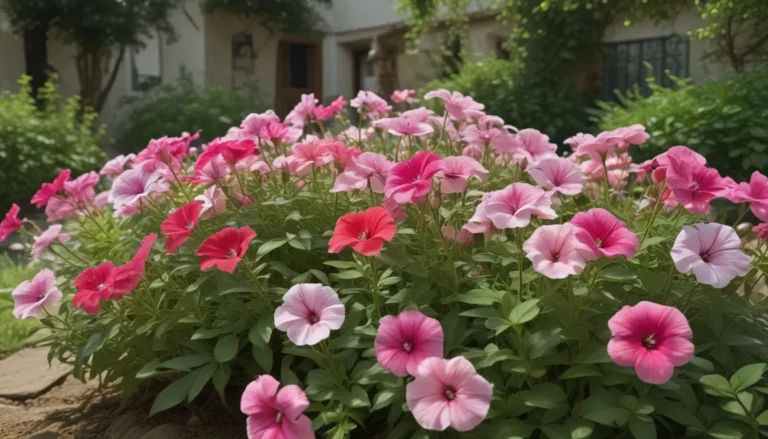Red Tip Photinia: A Comprehensive Guide to Planting and Growing

Are you looking to add a burst of color and elegance to your garden? Look no further than the Red Tip Photinia. This easy-to-grow ornamental shrub is a favorite among urban landscapers and home gardeners alike, prized for its striking red and green foliage.
What Is Red Tip Photinia?
The Red Tip Photinia, also known as Fraser (or Fraser’s) photinia or red top photinia, is a large shrub that belongs to the Rose family, Rosaceae. It boasts dense red and green leaves that start off red and transition to a deep green over the course of a few weeks. This evergreen shrub is often used as a privacy screen or hedge and can grow up to 10-15 feet tall depending on the cultivar and age of the plant.
A hybrid of Japanese and Chinese photinia, the Red Tip Photinia produces small white flowers in mid-spring and inedible red fruits in the summer that are attractive to birds. While toxic to humans, these berries add visual interest to the plant.
Cultivation and History
The Red Tip Photinia’s genus name, derived from the Greek word “photeinos,” refers to its shiny, glossy leaves, a common characteristic among all plants in the genus. Native to warm, temperate regions of Asia, this ornamental shrub is widely grown around the world.
First named and documented in 1940 by Ollie W. Fraser, a nurseryman from Birmingham, Alabama, the Red Tip Photinia has since become a popular choice for gardens in southern regions of the United States.
Propagation
To propagate a new Red Tip Photinia plant, stem cuttings are the best method. By taking six to eight-inch cuttings from new growth areas and rooting them in a mixture of vermiculite and perlite, you can create clones of the original plant with identical characteristics. These cuttings can be transplanted in the late summer or early spring.
Transplanting nursery-grown Red Tip Photinia plants is another option. When planting these transplants, ensure they are placed in well-draining soil that receives full sun to partial shade.
How to Grow
Red Tip Photinia thrives in full sunlight to partial shade and well-draining soil. Choose a location with fertile loam or light soil, amending heavy clay soil with sand if needed. While tolerant of alkaline soil, avoid waterlogged conditions that can lead to root rot.
Water deeply every seven to 10 days in the first two years after planting, adjusting for dry conditions. Mulching can help retain soil moisture and suppress weeds. Fertilize the soil with a balanced organic fertilizer before planting and avoid excessive nitrogen application to prevent yellowing of leaves.
Growing Tips
- Plant in loamy, well-draining soil.
- Space plants at least five feet apart.
- Fertilize sparingly.
Pruning and Maintenance
Red Tip Photinia can be heavily sheared to maintain its shape as a hedge or privacy screen. Light pruning of shoot tips encourages the growth of new reddish leaves. For overgrown plants, cutting them back to the ground in the fall can promote new growth in the spring.
Regular pruning of competing shoots can shape larger tree-form Red Tip Photinia plants into the desired form. This pruning should be done once or twice a year, preferably in early spring.
Cultivars to Select
Several cultivars of Red Tip Photinia are available, each with unique characteristics:
- Red Tip Photinia, P. x fraseri: Standard hybrid plants available in #5 containers.
- Cassini (Pink Marble): Features pink leaves with white variegated margins, grows up to 14 feet tall.
- Red Robin (Christmas berry): Common cultivar resistant to leaf spot diseases, grows up to 12 feet tall.
- Little Red Robin: A smaller cultivar growing two to three feet tall, resistant to diseases, and similar in appearance to Red Robin.
Managing Pests and Disease
Red Tip Photinia is susceptible to various pests and diseases, including fungal diseases and insects. Some common pests and diseases include:
Insects
- European Fruit-Tip Moth: Causes damage to new shoots and fruits, control with horticultural oil.
- Mites: Cause stippling of foliage, control with horticultural oil.
- Scale: Protect plants from stunted growth, control with rubbing alcohol, beneficial insects, or insecticidal soap.
Disease
- Fire Blight: Bacterial disease causing cankers on wood, control with copper sprays.
- Leaf Spot: Fungal disease causing red spots on leaves, control with fungicides.
- Powdery Mildew: Fungal disease, prevent with proper spacing and removal of affected foliage.
- Root Rot: Caused by fungi or water molds, prevent with disease-free plants and well-draining soil.
Best Uses
Red Tip Photinia is a versatile plant suitable for various uses, including growing along highway medians, as a specimen tree, or as a dense hedge for privacy screens. Due to its tolerance of poor soil conditions and ability to withstand full sun, it is a popular choice for commercial and residential landscapes.
Quick Reference Growing Guide
- Plant Type: Woody shrub
- Flower/Foliage Color: White/red and green
- Hardiness (USDA Zone): 7-9
- Bloom Time: Spring-fall
- Exposure: Full sun to part shade
- Spacing: 5-8 feet
- Water Needs: Low
- Spread: 8-10 feet
- Common Pests: European fruit-tip moths, mites, scale
- Common Diseases: Leaf spot, fire blight, powdery mildew, root rot
Conclusion
In conclusion, Red Tip Photinia is a vibrant and versatile shrub that can add beauty and functionality to any garden. By following the cultivation, propagation, and maintenance tips outlined in this guide, you can successfully grow and care for these stunning plants. Whether used as a hedge, privacy screen, or specimen tree, Red Tip Photinia is sure to impress with its striking foliage and colorful berries. Experiment with different cultivars to discover the perfect fit for your garden!
Have you had the pleasure of growing Red Tip Photinia in your garden? Share your experiences with us and let us know if you have any questions or comments. For more information on growing flowering shrubs, explore our other comprehensive guides on Cotoneaster, Oleander Shrubs, and Flowering Quince. Happy gardening!
*





